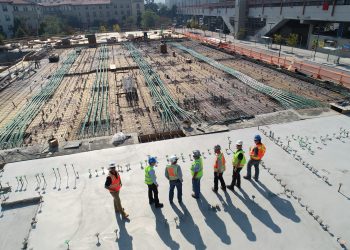Rubbish removal is a vital aspect of maintaining cleanliness in our communities, but its environmental impact is often overlooked. From the moment waste is generated to its final disposal, every step of the rubbish removal process can have significant consequences for the environment. In this article, we will explore the environmental implications of rubbish removal and discuss potential solutions to mitigate its negative effects.
Generation of Waste
The first stage in the rubbish removal process is the generation of waste. With increasing consumption and population growth, the amount of waste generated worldwide is reaching unprecedented levels. Whether it’s food packaging, electronic devices, or household items, the production and consumption of goods contribute to the accumulation of waste.
Resource Depletion
The manufacturing of products and packaging materials requires the extraction of natural resources such as minerals, timber, and fossil fuels. The overexploitation of these resources not only depletes finite reserves but also leads to habitat destruction and biodiversity loss. Additionally, the energy-intensive nature of manufacturing processes contributes to greenhouse gas emissions and exacerbates climate change.
Pollution
Improper disposal of waste can lead to pollution of the air, soil, and water. Landfills release methane, a potent greenhouse gas, as organic waste decomposes anaerobically. Plastic waste, especially single-use items like bags and bottles, can persist in the environment for centuries, leaching harmful chemicals and endangering wildlife. Incineration of waste releases pollutants such as dioxins and heavy metals into the air, posing health risks to nearby communities.
Transportation
The transportation of waste from collection points to disposal sites requires energy and emits carbon dioxide and other pollutants. Trucks and other vehicles used for rubbish removal contribute to air pollution and traffic congestion, particularly in urban areas. Moreover, long-distance transportation of waste may involve the use of fossil fuels, further exacerbating environmental impacts.
Landfilling
Landfills are the most common method of waste disposal globally, but they pose significant environmental risks. As waste decomposes, it generates methane, a greenhouse gas that is more potent than carbon dioxide in the short term. Landfills can also contaminate groundwater and soil with leachate, a toxic liquid formed by the decomposition of organic waste. Furthermore, the limited availability of suitable land for landfill sites exacerbates land-use conflicts and threatens ecosystems.
Waste-to-Energy
Waste-to-energy technologies, such as incineration and anaerobic digestion, offer an alternative to landfilling by converting waste into electricity or heat. While these methods can help reduce the volume of waste sent to landfills and generate renewable energy, they are not without environmental drawbacks. Incineration emits air pollutants and may produce toxic ash residues, while anaerobic digestion requires careful management to prevent the release of methane into the atmosphere.
Recycling and Resource Recovery
Recycling and resource recovery are essential components of sustainable waste management. By reprocessing materials such as paper, glass, metal, and plastic, recycling conserves natural resources, reduces energy consumption, and minimises pollution. However, the effectiveness of recycling programs depends on factors such as infrastructure, public participation, and market demand for recycled materials.
Conclusion
The environmental impact of rubbish removal is multifaceted and far-reaching, affecting ecosystems, climate, and human health. To address this challenge, a holistic approach is needed that emphasises waste reduction, resource conservation, and the adoption of sustainable practices. By promoting recycling, investing in waste-to-energy technologies, and reducing consumption and packaging waste, we can minimise the environmental footprint of rubbish removal and move towards a more sustainable future.









